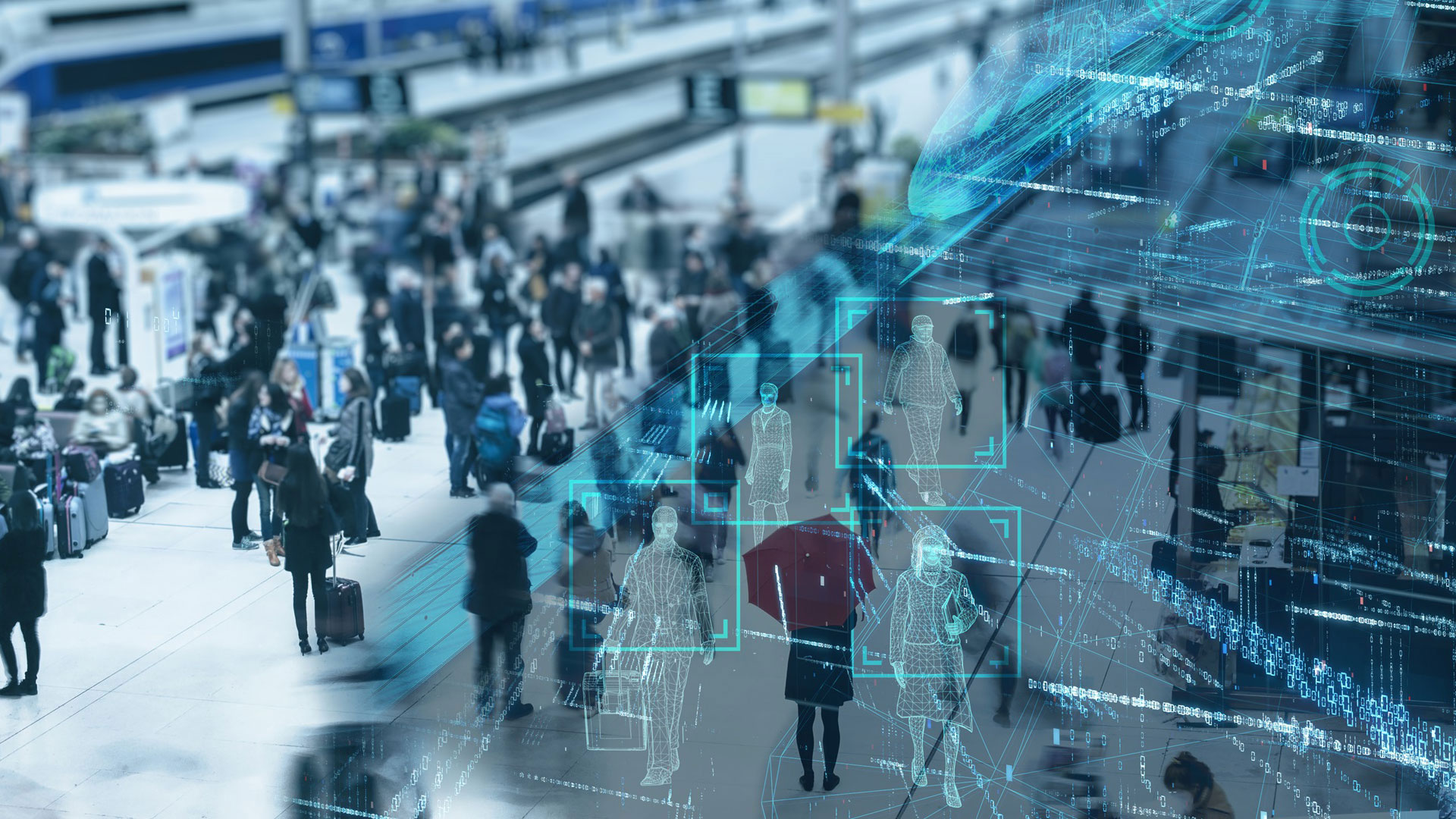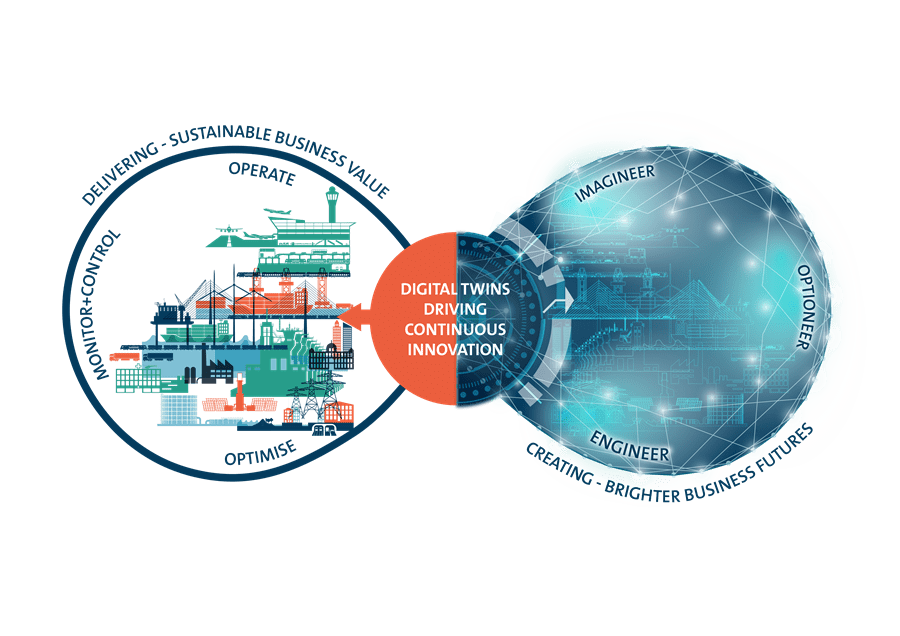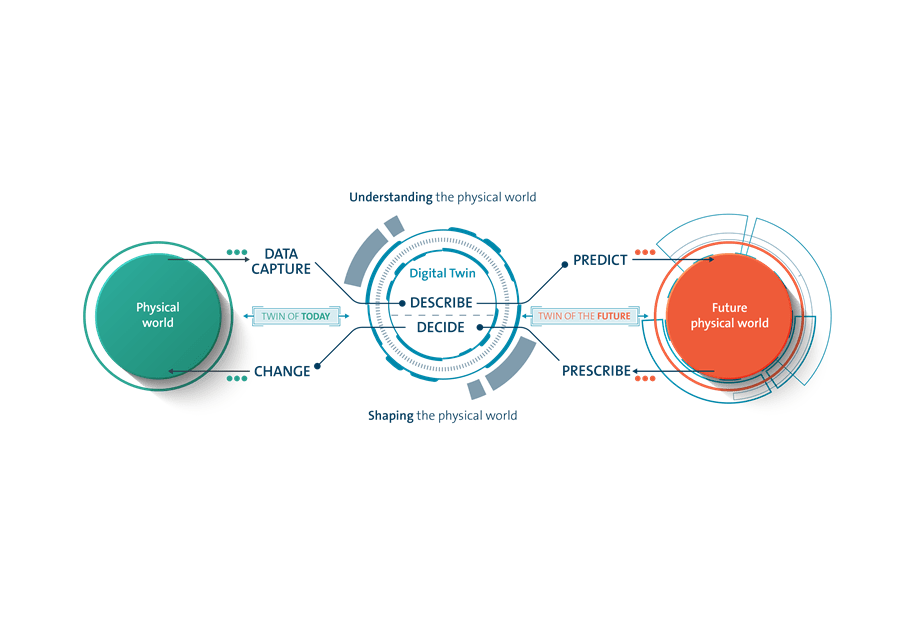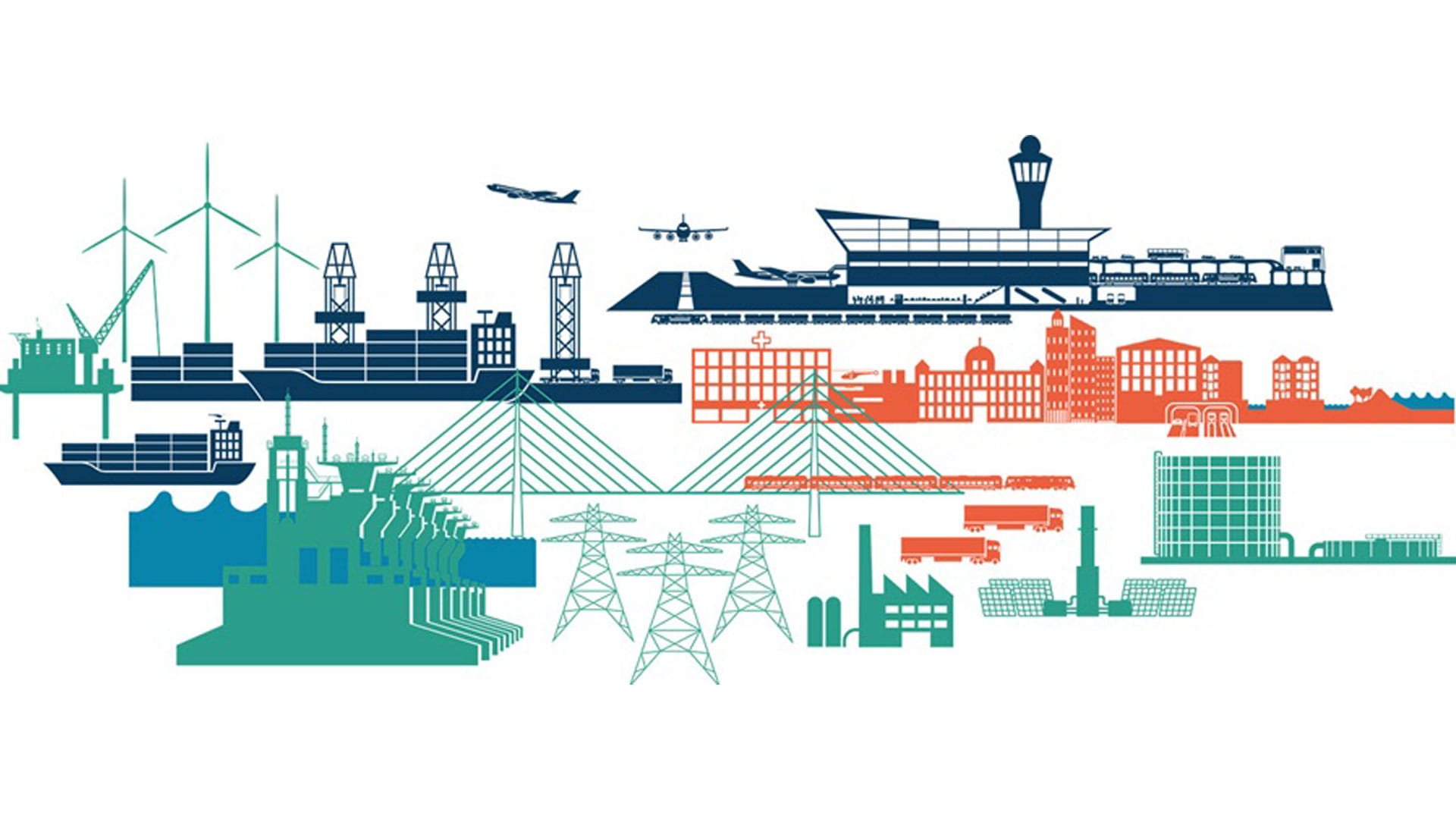Successfully implementing your digital twin

Digital twins drive continuous innovation
Once a digital twin has been designed, engineered and implemented, it grants complete visibility into the operations and performance of the real-world entity it mirrors. That visibility enables informed decision-making, helping you visualise, plan, and engineer a stronger, more sustainable future for that entity and the processes it enables.
We call this the ‘infinity loop’ model of continuous innovation and learning. The digital twin helps you identify valuable innovation opportunities, then grants visibility into your ‘new normal’ once changes are made—enabling you to continuously improve the sustainability, resilience, and value generated by assets and processes.

A digital enabler for real-world change
A digital twin lets you optimise almost anything — a single machine or workflow, a company or plant, even an entire city. It does this by providing real-time information about the world as it is now, alongside predictive insights into the way things could be.Digital twins vs. digital twinning
The terms “digital twin” and “digital twinning” are often used interchangeably. But in reality, they’re very different concepts—and it’s important to recognise the difference.Digital twinning is the process of designing, developing and maintaining your digital twin of the physical environment.
Digital twins on the other hand are the outputs of digital twinning. Each digital twin is a digital reflection of an individual asset, process or system generated through the digital twinning process. By pursuing a strategy of digital twinning, you’ll eventually build up a vast ecosystem of digital twins.
The Royal HaskoningDHV digital twin view
A digital twin has two purposes:
- help us understand the physical world by providing accurate insights into the status of the entity it represents
support informed decision-making that helps us adapt and change that physical reality to make it better. - To deliver these values, digital twins consist of various building blocks. These building blocks, and their underlying technologies, need to be implemented as part of your digital transformation, combining people, processes and technology.

Physical world
A digital twin creates a highly accurate, virtual version of the physical world, informed by real-time data capture. This virtual representation shows things as they are now, in great detail, but also how things will be in the future.Digital twin
You can program your digital twin to simulate the outcomes you’d like to achieve, and gain insight into the actions necessary to make them a reality. This allows you to make more informed decisions about changes to your physical environments, with visibility of their implications before you put plans in action.
Future physical world
Successfully implementing the right changes requires knowledge and experience of the real world. We’ll work alongside you to help incorporate your digital twin into your decision-making process, so the human and digital elements complement each other perfectly.Three dimensions to digital twins
From asset level to system level
Today, most digital twins in the market focus on an individual asset. But, with the correct interoperability and industry standards, they can potentially be combined into an eco-system of twins up to supply chain, city, or even country level.Digital twins for every maturity level
Digital twins can be created at virtually any level of maturity or sophistication, depending on the digital maturity of the organisation, the availability of data, and the business questions you need a twin to answer.Value throughout the lifecycle
Digital twins add value across the life cycle of an asset, process, system or organisation. This can begin right at the design phase through the use of design simulation twins. But practically, digital twins can add value at any stage of an asset, process or system’s lifecycle.
